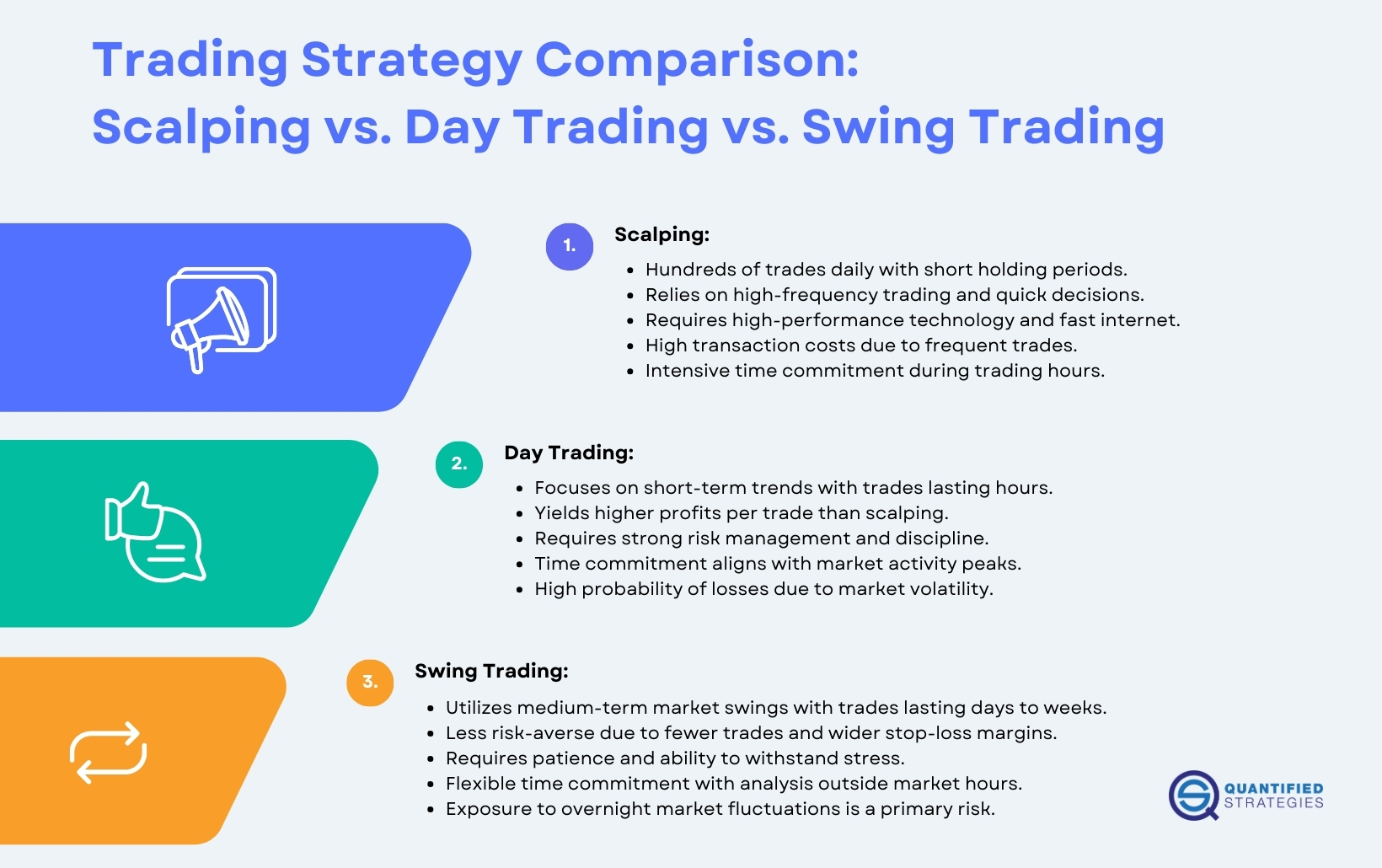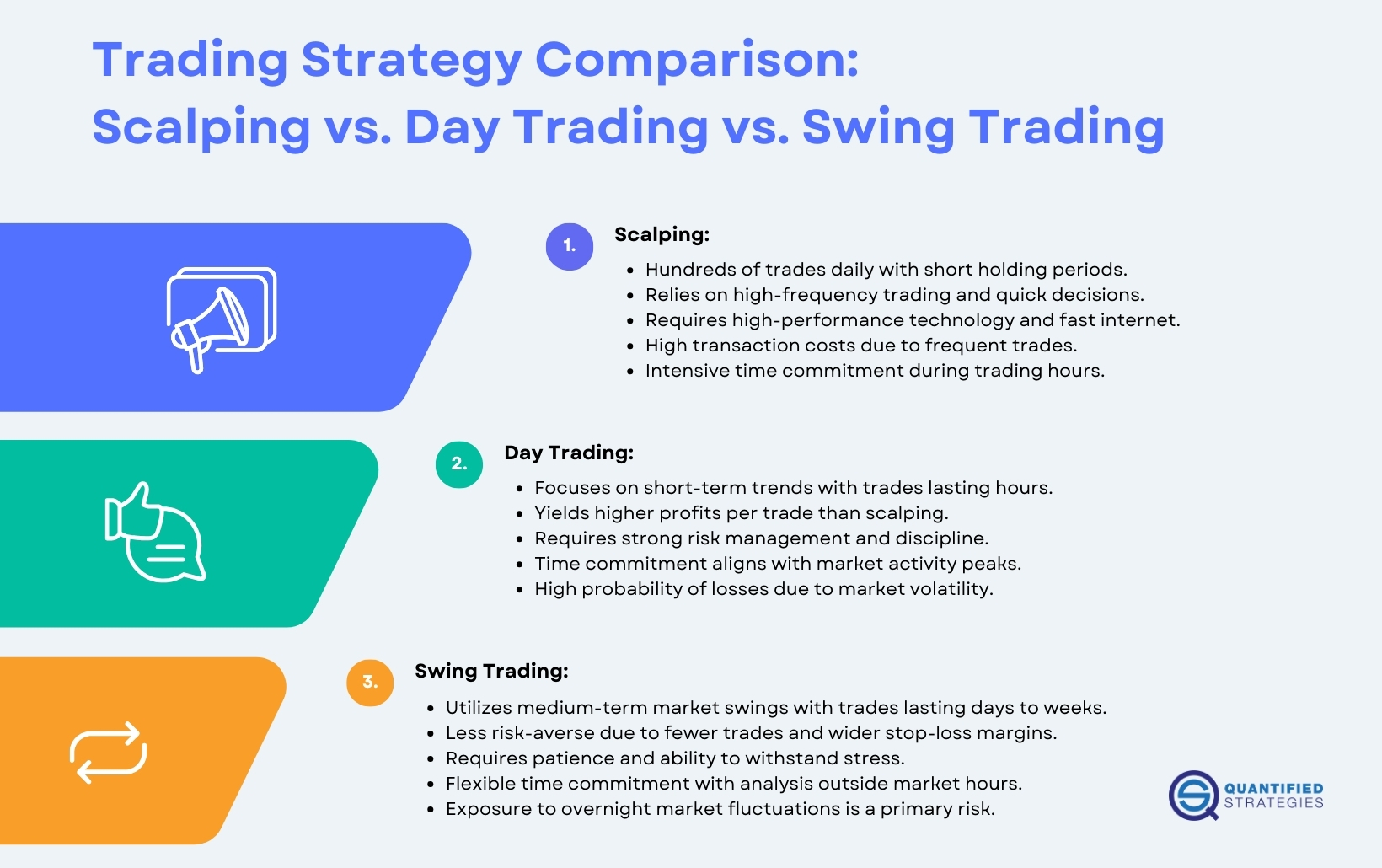Did you know that some traders are so quick, they could probably outrun a cheetah on a caffeine high? In the fast-paced world of day trading arbitrage, speed and strategy are essential. This article dives deep into the intricacies of day trading arbitrage, explaining what it is and how it works, along with key strategies for success. You'll learn to identify lucrative arbitrage opportunities and discover the best tools and software to enhance your trading experience. We discuss the impact of market volatility, the associated risks, and methods to minimize them. Additionally, you’ll find insights on choosing the best markets, understanding transaction costs, and leveraging technology. Psychological challenges and performance tracking are addressed, along with regulatory considerations and how to capitalize on news events. Finally, we highlight common pitfalls to avoid, ensuring your journey in day trading arbitrage is both informed and successful. For more expert insights, keep reading with DayTradingBusiness!
What is day trading arbitrage and how does it work?
Day trading arbitrage involves buying and selling the same asset across different markets to exploit price differences. Traders identify discrepancies in asset prices, often using algorithms or real-time data analysis. For example, if a stock is cheaper on one exchange than another, a trader can buy low and sell high almost simultaneously. This technique requires quick execution and low transaction costs to be profitable. Effective day trading arbitrage hinges on speed, market knowledge, and access to multiple exchanges.
What are the key strategies for successful day trading arbitrage?
Key strategies for successful day trading arbitrage include:
1. Identify Price Discrepancies: Monitor multiple exchanges to spot differences in asset prices. Use real-time data feeds for accuracy.
2. Utilize Technology: Employ trading bots or algorithms to execute trades quickly and capitalize on fleeting opportunities.
3. Leverage Market Depth: Analyze order books to assess liquidity and ensure you can enter and exit positions without significant slippage.
4. Focus on Low Latency: Reduce lag in execution by using high-speed internet and proximity hosting to exchange servers.
5. Diversify Assets: Trade across various asset classes such as stocks, cryptocurrencies, and commodities to spread risk.
6. Manage Risk: Set strict stop-loss orders and position sizes to protect your capital from adverse market movements.
7. Stay Informed: Keep up with market news and trends that might impact asset prices and arbitrage opportunities.
8. Practice Discipline: Stick to your trading plan and avoid emotional decisions that can derail your strategy.
How can I identify arbitrage opportunities in the market?
To identify arbitrage opportunities in the market, start by monitoring price discrepancies across different exchanges or markets. Use real-time data feeds and analytics tools to track assets like stocks, cryptocurrencies, or commodities. Look for variations in prices for the same asset; when you find a significant difference, execute simultaneous buy and sell orders.
Employ algorithmic trading strategies to automate the detection of these discrepancies. Keep an eye on transaction costs and slippage, as they can erode your profits. Additionally, stay informed about market news and events that might create temporary price differences. Utilize pairs trading to hedge risks while capitalizing on mispriced assets. Regularly analyze historical data to refine your approach.
What tools and software are best for day trading arbitrage?
The best tools and software for day trading arbitrage include:
1. Trading Platforms: Interactive Brokers, Thinkorswim, and TradeStation offer advanced charting and execution capabilities.
2. Arbitrage Bots: Gekko and Zenbot can automate trades and monitor price differences across exchanges.
3. Market Scanners: Trade Ideas and Finviz help identify arbitrage opportunities quickly.
4. Data Feeds: Live data feeds from Bloomberg or Reuters provide real-time market information.
5. API Access: Use APIs from exchanges like Binance or Coinbase Pro for custom algorithmic trading.
6. Risk Management Tools: Tools like MetaTrader 4 help manage risk through stop-loss and take-profit orders.
7. Backtesting Software: Amibroker and NinjaTrader allow you to test strategies against historical data.
Choose tools that fit your trading style and ensure they offer low latency and high reliability for optimal performance.
How does market volatility impact day trading arbitrage?
Market volatility can significantly impact day trading arbitrage by widening price discrepancies between assets, providing more opportunities for profit. Increased volatility often leads to rapid price movements, which can create gaps that arbitrageurs can exploit. However, higher volatility also raises risks; price swings can close arbitrage opportunities faster than they can be executed. Effective day traders must adapt their strategies to capitalize on these fleeting chances while managing the associated risks.
What are the risks associated with day trading arbitrage?

The risks associated with day trading arbitrage include:
1. Market Volatility: Rapid price changes can negate profits before trades are executed.
2. Execution Risk: Delays in order execution can lead to missed opportunities or losses.
3. Liquidity Risk: Low trading volume can make it difficult to enter or exit positions without significant price impact.
4. Transaction Costs: Frequent trading incurs fees that can erode profit margins.
5. Leverage Risk: Using borrowed funds can amplify losses alongside gains.
6. Regulatory Risk: Changes in market regulations can affect arbitrage strategies.
7. Technical Failures: System outages or malfunctions can disrupt trading activities.
Understanding these risks is crucial for successful day trading arbitrage.
How can I minimize risks in day trading arbitrage?
To minimize risks in day trading arbitrage, focus on these techniques:
1. Use Automation: Implement trading algorithms to execute trades quickly, reducing the impact of market fluctuations.
2. Diversify Strategies: Combine different arbitrage strategies, such as statistical and spatial arbitrage, to spread risk.
3. Monitor Market Conditions: Stay updated on market news and trends that could affect pricing discrepancies.
4. Limit Position Size: Only invest a small percentage of your capital in each trade to mitigate potential losses.
5. Set Stop-Loss Orders: Use stop-loss orders to automatically exit trades at predetermined levels, protecting your capital.
6. Analyze Fees and Costs: Account for transaction fees and slippage to ensure profitability remains intact.
7. Utilize Real-Time Data: Access real-time market data to identify and act on arbitrage opportunities promptly.
8. Maintain Liquidity: Trade in markets with high liquidity to ensure you can enter and exit positions without significant price impact.
By applying these techniques, you can effectively manage and reduce risks in day trading arbitrage.
What are the best markets for day trading arbitrage?
The best markets for day trading arbitrage include:
1. Stock Markets: High liquidity stocks, especially large-cap companies, provide opportunities for price discrepancies.
2. Forex Markets: Currency pairs often have varying rates across different brokers, ideal for arbitrage.
3. Cryptocurrency Exchanges: Price differences between exchanges can yield quick profits.
4. Futures Markets: Look for mispricing between futures contracts and their underlying assets.
5. Options Markets: Inefficiencies in pricing can arise, especially close to expiration.
Focus on markets with high volatility and liquidity for the best arbitrage opportunities.
How do transaction costs affect day trading arbitrage profits?

Transaction costs significantly impact day trading arbitrage profits by reducing the overall returns from trades. High fees can erode margins, making it difficult to profit from small price discrepancies. If transaction costs exceed the potential arbitrage gain, the trade becomes unprofitable. Additionally, frequent trading increases cumulative costs, which can further diminish profits. Efficiently managing these costs is crucial for maximizing returns in day trading arbitrage.
What role does technology play in day trading arbitrage?
Technology is crucial in day trading arbitrage. It enables rapid data analysis and execution, allowing traders to identify price discrepancies across markets in real-time. High-frequency trading algorithms automate trades, minimizing latency and maximizing profit potential. Advanced trading platforms offer tools for monitoring market trends and executing strategies seamlessly. Additionally, access to real-time market data and APIs enhances decision-making and efficiency, making technology an essential component in successful arbitrage trading.
Learn about What Role Does Compliance Play in Day Trading Platform Certification?
How can I develop a day trading arbitrage plan?
To develop a day trading arbitrage plan, follow these steps:
1. Identify Markets: Choose the markets you want to trade, such as stocks, forex, or cryptocurrencies.
2. Select Instruments: Focus on assets that are highly correlated or have price discrepancies across different exchanges.
3. Set Up Tools: Use trading platforms and software for real-time data analysis, including price feeds and charting tools.
4. Monitor Spreads: Regularly check bid-ask spreads to identify arbitrage opportunities between exchanges.
5. Define Entry and Exit Points: Set clear criteria for when to enter and exit trades based on price movements.
6. Risk Management: Establish stop-loss orders to protect against sudden market shifts.
7. Backtest Your Strategy: Use historical data to test your plan and refine it based on the results.
8. Stay Informed: Keep up with market news and trends that may affect price disparities.
9. Adjust for Costs: Factor in transaction fees and slippage to ensure profitability.
10. Practice Discipline: Stick to your plan and avoid emotional trading decisions.
Implementing these steps will help you create a solid day trading arbitrage strategy.
Learn about How to Develop a Day Trading Arbitrage Plan
What are the psychological challenges in day trading arbitrage?
Day trading arbitrage presents several psychological challenges, including the pressure of making quick decisions, managing fear of losses, and dealing with the stress of volatility. Traders often face emotional fatigue from constant monitoring of the market, which can lead to impulsive decisions. The fear of missing out (FOMO) can push traders to act irrationally, while overconfidence from past successes may result in neglecting risk management. Additionally, the isolation of trading alone can create anxiety and hinder objective decision-making. Maintaining discipline and a clear mindset is crucial to navigate these challenges effectively.
How can I track and analyze my day trading arbitrage performance?
To track and analyze your day trading arbitrage performance, use a combination of trading journals, software tools, and metrics.
1. Trading Journal: Record every trade, including entry and exit points, profit/loss, and time taken. This helps identify patterns and improve decision-making.
2. Performance Metrics: Focus on key metrics like return on investment (ROI), win rate, and average profit per trade. Analyzing these will give you insights into your strategy's effectiveness.
3. Software Tools: Utilize platforms like TradingView or specific arbitrage software that can automate tracking and provide real-time analytics on spreads and execution.
4. Backtesting: Run simulations on historical data to evaluate how your strategies would have performed, helping refine your approach.
5. Regular Reviews: Set aside time weekly or monthly to assess your trades and adjust strategies based on performance data.
Implementing these techniques will enhance your ability to track and analyze your day trading arbitrage performance effectively.
Learn about How Do Prop Firms Evaluate Day Trading Performance?
What regulatory considerations should I be aware of in arbitrage trading?
In arbitrage trading, be aware of regulations concerning market manipulation, insider trading, and compliance with trading venues. Understand the rules set by the SEC, FINRA, and relevant exchanges. Ensure you adhere to reporting requirements and maintain transparency in your trading strategies. Also, consider the tax implications of your trades, as profits may be subject to capital gains tax. Familiarize yourself with the specific regulations in your jurisdiction, as they can vary significantly.
How can I leverage news events for day trading arbitrage?
To leverage news events for day trading arbitrage, focus on these steps:
1. Identify Key Events: Monitor economic reports, earnings releases, and geopolitical developments that can cause volatility.
2. Analyze Market Response: Assess how similar news impacted prices in the past to predict potential reactions.
3. Use Real-Time Data: Utilize fast news feeds and trading platforms to stay updated and act quickly.
4. Set Up Alerts: Create alerts for specific news items and price points to capitalize on sudden market moves.
5. Implement Risk Management: Use stop-loss orders to protect against unexpected reversals.
6. Diversify Your Trades: Trade across different assets or sectors to spread risk and increase opportunities.
7. Evaluate Sentiment: Gauge market sentiment through social media and news sentiment analysis tools to refine your strategy.
By applying these advanced techniques, you can effectively exploit price discrepancies created by news events.
Learn about How News Events Impact Day Trading Decisions
What are common mistakes to avoid in day trading arbitrage?

Common mistakes to avoid in day trading arbitrage include:
1. Ignoring Transaction Costs: Always factor in fees, as they can eat into profits.
2. Over-leveraging: Using too much leverage can amplify losses quickly.
3. Lack of Research: Failing to understand the markets or assets can lead to poor decisions.
4. Neglecting Risk Management: Not setting stop-loss orders can result in significant losses.
5. Chasing Volatility: Trading on impulse during high volatility can lead to mistakes.
6. Inadequate Monitoring: Not keeping track of positions and market changes can result in missed opportunities or losses.
7. Emotional Trading: Letting emotions dictate trades can lead to irrational decisions.
8. Failing to Diversify: Relying on a single strategy or asset increases risk.
9. Timing Issues: Entering or exiting trades too late can negate potential profits.
Avoid these pitfalls to enhance your day trading arbitrage strategy.
Learn about Common Mistakes in Day Trading Analysis to Avoid
Conclusion about Advanced Techniques in Day Trading Arbitrage
In summary, mastering day trading arbitrage involves understanding key strategies, identifying market opportunities, and leveraging technology effectively. It's crucial to navigate the risks while minimizing transaction costs to maximize profits. By developing a solid trading plan and keeping abreast of market volatility and regulatory considerations, traders can enhance their performance. For comprehensive insights and support, DayTradingBusiness is here to guide you through every step of your arbitrage trading journey.
Learn about Advanced Techniques for Indicator Analysis in Day Trading